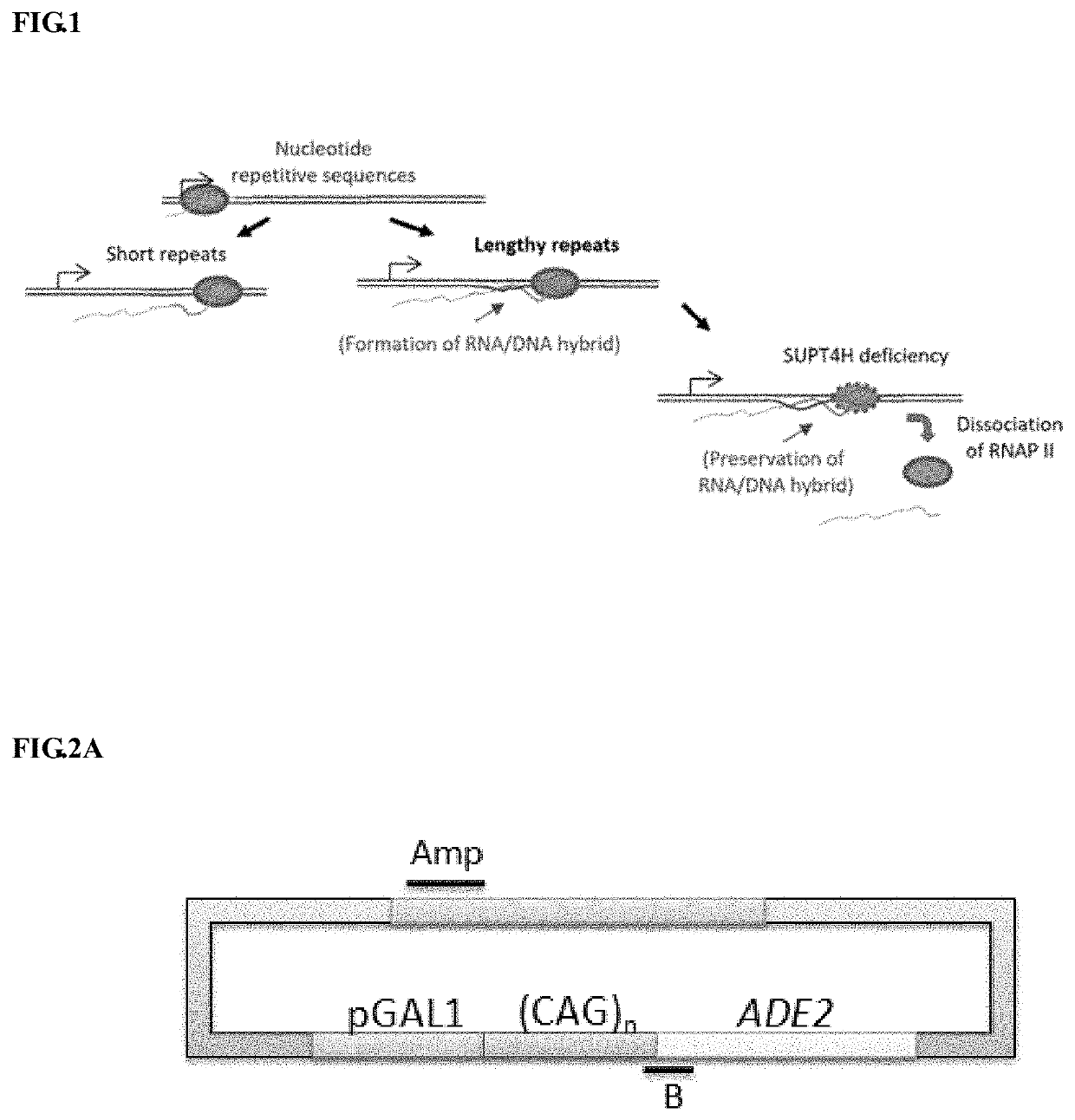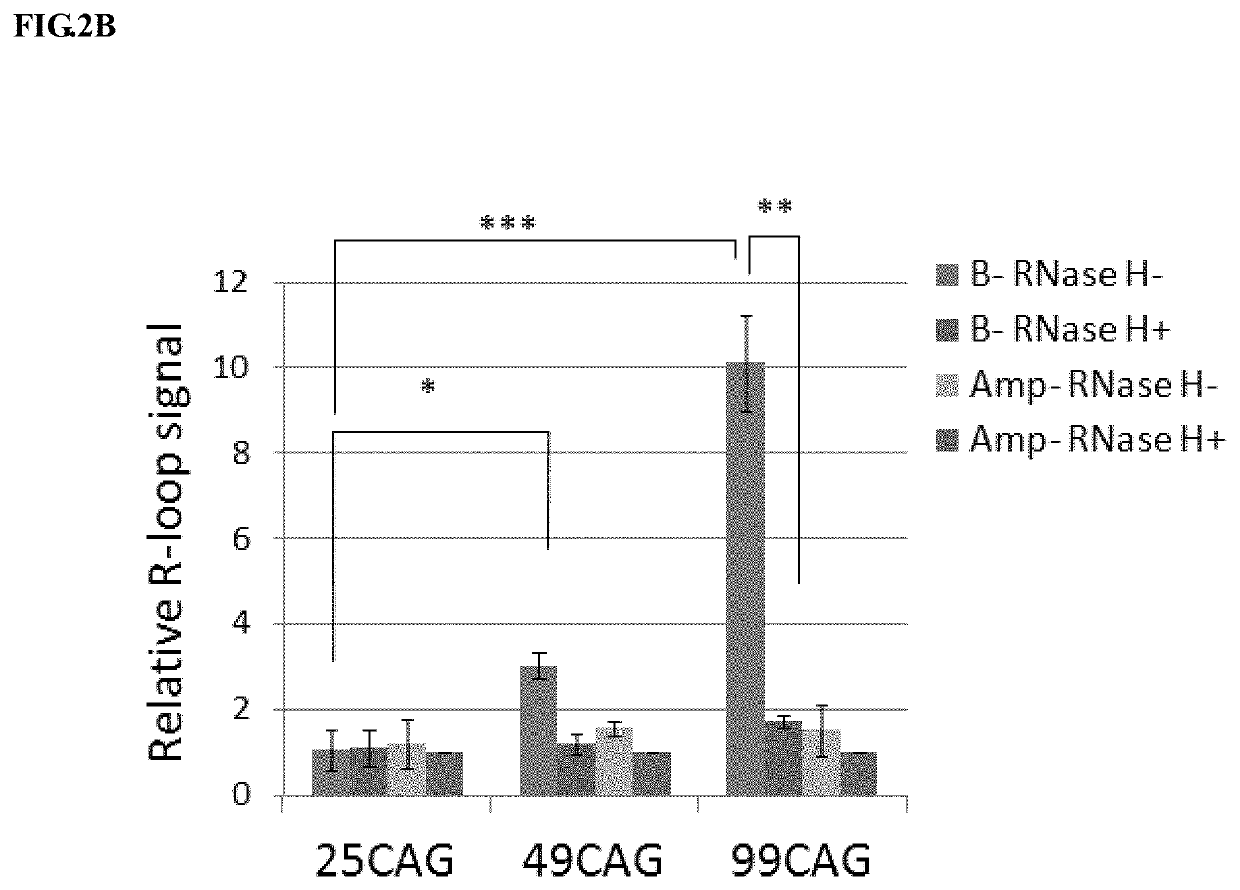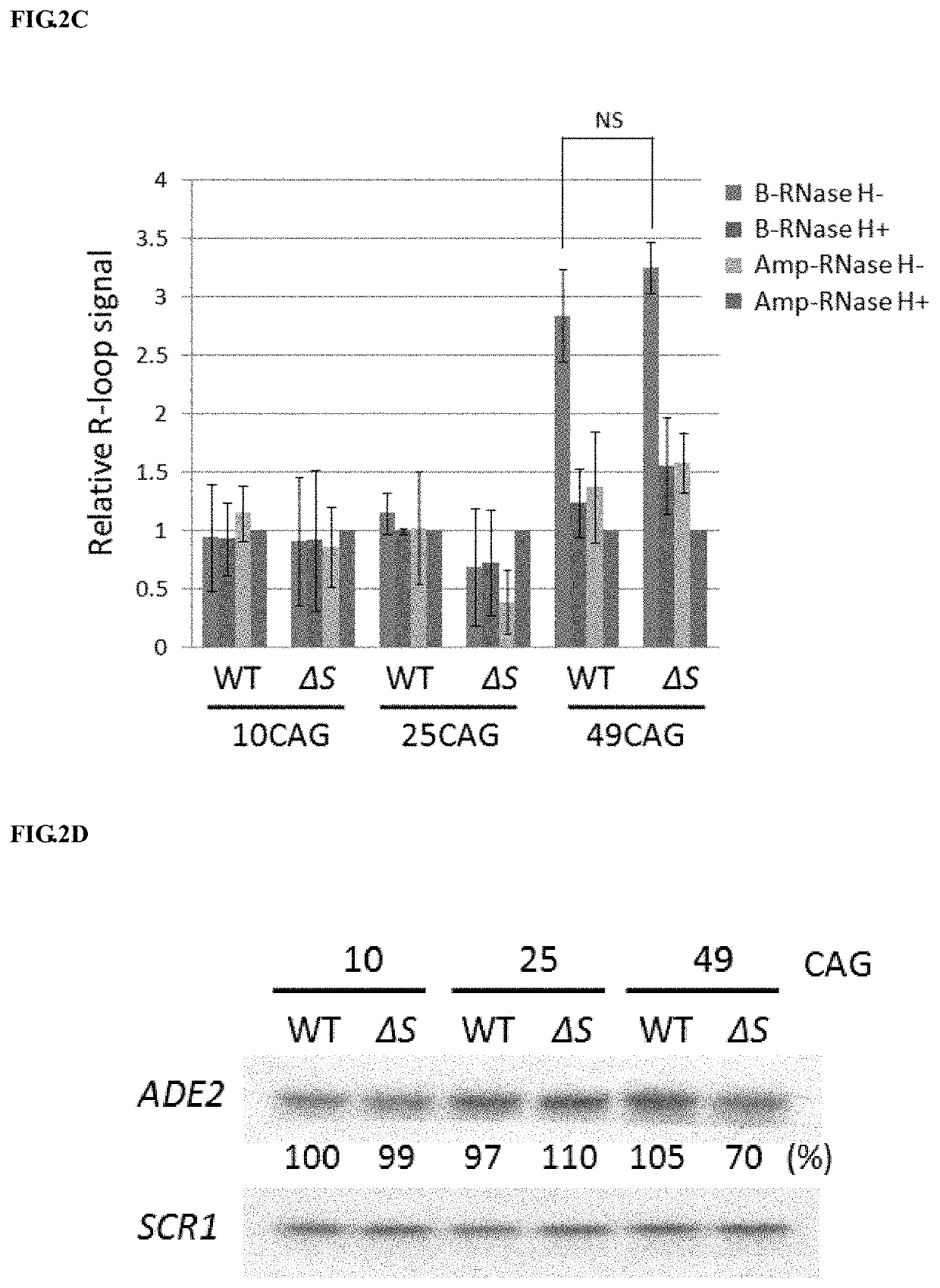Method to enhance the transcription regulation of SUPT4H on genes containing repetitive nucleotide sequences
a technology of repetitive nucleotide sequences and transcription regulation, which is applied in the direction of biochemistry apparatus and processes, drug compositions, nervous disorders, etc., can solve the problems of defective genes, toxic effects, and the specific population of neurons is more vulnerable than others
- Summary
- Abstract
- Description
- Claims
- Application Information
AI Technical Summary
Benefits of technology
Problems solved by technology
Method used
Image
Examples
example 1
Material and Method
[0072]Yeast Strains and Plasmids
[0073]All deletion strains were created by one-step gene replacement method and confirmed by PCR as previously described (Liu et al., 2012). SPT4Δ and RNH1Δ strains were derived from W303-1A cells by replacing the corresponding ORFs with KanMX and NatMX antibiotic selection cassette respectively.
[0074]Plasmid constructs that possess a variety of repetitive nucleotide sequences, including CA, CAA, CAG, CAAC, and CAACCA in different repeating units were generated by a methodology described previously (Liu et al., 2012). Full-length TOP1 coding sequence and the N-terminal portion of SEN1 (encoding amino acid residue 1 to 1017) were amplified by PCR using yeast genomic DNA as a template. The amplicons of TOP1 (by SmaI-TOP1 F and TOP1-NotI R primers) and SEN1 (by SmaI-SEN1 F and SEN1-NotI R primers) were cloned into vector pRS423-Cup1-3HA to generate pRS423-Cup1-TOP1 and pRS423-Cup1-SEN1 respectively.
[0075]Antibodies
[0076]S9.6, a monoclo...
example 2
Transcription Mediated R-Loop Formation is Affected by the Number of CAG Repeats, But is Not Influenced by Spt4 in Yeast Cells.
[0098]Please refer to FIG. 2A-2D. (A) Schematic diagram shown the amplicons by primer set B and primer set Amp on (CAG)n-ADE2 plasmid. (CAG)n-ADE2 possesses either 10, 25, 49, or 99 CAG repeats fused with ADE2 report gene. The fusion genes are under the control of GAL1 promoter (pGAL1), which can induce (CAG)n-ADE2 expression by growing cells in medium containing 2% galactose. Primer set B amplifies the DNA fragment from the last three CAG repeats to the position 200 bps away from the repeat unit. Primer Amp amplifies ampR gene, which does not generate R-loops, and serves as a control. (B) Analysis of R-loop signal on transcribed (CAG)n-ADE2 by RNA / DNA hybrid precipitation (DIP) method. Wild-type (WT) cells introduced with (CAG)25-ADE2, (CAG)49-ADE2 or (CAG)99-ADE2 were grown in galactose-containing medium and then subjected to DIP analysis. The signal of Am...
example 3
R-Loop Increment Results in a Decreased Production of Transcripts With Lengthy CAG Repeats in Spt4 Deficient Cells
[0100]Please refer to FIG. 3. (A) Analysis of R-loop signal in wild-type (WT), RNH1Δ (Δ1), SPT4Δ (ΔS) and RNH1Δ SPT4Δ double deletion (Δ1ΔS) cells. These cells were introduced with (CAG)99-ADE2, grown in galactose-containing medium, and then collected for R-loop detection by DIP assay. Data presented are normalized with input DNA and compared to Amp-RNase H+ samples as described in FIG. 2(B) (N=3; *, P25-ADE2 or (CAG)99-ADE2 and then collected for RNA analysis as described in FIG. 2(D). After normalization, the level of (CAG)99-ADE2 mRNA in WT cells was set as 100% (N=3) (C) Schematic diagram shown the amplicons by primer sets A and B. Primer set A specifically detects the region, 50 bps upstream of the repetitive sequence to the beginning of first three CAG repeating units. Primer set B amplifies DNA segment downstream of 99 CAG repeats as described in FIG. 2(A). (D) An...
PUM
| Property | Measurement | Unit |
|---|---|---|
| pH | aaaaa | aaaaa |
| pH | aaaaa | aaaaa |
| pH | aaaaa | aaaaa |
Abstract
Description
Claims
Application Information
 Login to View More
Login to View More - R&D
- Intellectual Property
- Life Sciences
- Materials
- Tech Scout
- Unparalleled Data Quality
- Higher Quality Content
- 60% Fewer Hallucinations
Browse by: Latest US Patents, China's latest patents, Technical Efficacy Thesaurus, Application Domain, Technology Topic, Popular Technical Reports.
© 2025 PatSnap. All rights reserved.Legal|Privacy policy|Modern Slavery Act Transparency Statement|Sitemap|About US| Contact US: help@patsnap.com



